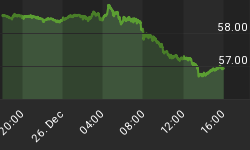
"He who sees the action that is in inaction is wise indeed."
Bhagavad Gita (6th Century B.C.)
With more bad news surfacing almost daily on the topics of housing, structured investment vehicles (SIVS), and the general credit markets, the odds of a recession and continued difficulty for stocks have increased in recent weeks. Whether or not we meet the standards of a formal recession in 2008, we know at a minimum we'll have tepid economic growth and continued problems in housing, SIVs, and the credit markets.
From a technical perspective (charts and indicators), the vast majority of asset classes appear unattractive on a short-term basis, which aligns well with recent weak fundamental news. However, the technical breakdowns are not yet severe enough to signal a significant shift from a bull market to a bear market in many asset classes, including U.S. stocks. The deterioration, especially when you factor in the weakness across multiple asset classes, is severe enough to warrant putting defensive contingency plans in place.
Since many of the asset class charts look similar at the present time, we can examine the S&P 500 (SPY), EEM - the emerging markets ETF (stocks), and the CRB Index (commodities), to illustrate the conditions in several asset classes. We'll use the 200-day moving average as a basic bull market / bear market measuring stick. For those who are not familiar with stock chart reading, the 200-day moving average is used as a primary guide in determining whether any particular asset class, index, or investment is in an uptrend or downtrend. In simplified terms, a market in an uptrend tends to spend more time above its 200-day moving average and a market in a downtrend tends to spend more time below its 200-day moving average.
S&P 500: Since the market began its recent bout of volatility on July 13, 2007, there have been 112 trading days. Of those 112 days, the S&P 500 has closed below its 200-day moving average 26 times (23% of the time). Conversely, during the same period, the S&P 500 (SPY) has closed above its 200-day moving average 86 times (77% of the time). Given the news of the day, these are surprisingly positive stats.
The 200-day moving average is shown in red in the three charts below.

Emerging Market Stocks (EEM): Since July 13, 2007, EEM has closed below its 200-day moving average, 1 time (less than 1%). EEM closed above its 200-day moving average 111 of the 112 trading days (99% of the time). Emerging marketstocks remain firmly in an uptrend.

Commodities (CRB Index): Since July 13, 2007, the CRB index has closed below its 200-day moving average 7 times (6%) and above it 105 times (94%). Commodities (DBC)remain firmly in an uptrend.

As of this writing the general U.S. stock market, emerging market stocks, and the global commodities markets are not yet forecasting earth shattering gloom and doom. Nor are they painting a rosy picture (especially the S&P 500). There is no question we have cause for concern, but experience tells me it is better to wait for more compelling evidence from the markets before making any significant allocation shifts. While difficult when your account value experiences wild swings, maintaining a focus on where the markets may be a year from now rather than a week from now is of primary importance. As of this writing, the markets are not forecasting widespread or severe economic problems in the next year, although they certainly leave the door open to more wild swings in the coming months. That forecast is subject to rather rapid change as the charts can deteriorate quickly. The key is not to guess when deterioration may take place, but to wait for it to actually start taking place in a more meaningful way. This approach can help you stay with the long-term trend versus being shaken out by short-term trends. As volatility moves back toward historical norms, this concept will become even more important in the years ahead.
In the event of further weakness, which is quite possible, investors may consider some incremental shifts away from risk and weak asset classes into lower risk assets which are holding up better on a relative basis. Given all the uncertainty, bad news, and fear, it is easy to overlook the fact the S&P 500 remains only 7.9% from its all-time high set on October 9, 2007. The 7.9% drop is a serious concern, but given the current daily barrage of bad news it is not yet time to rush for the exits.
I wish you and your family a relaxing and happy holiday season.
Full Disclosure: The author and his clients have long positions in VWO, DBC, and CEF.
















